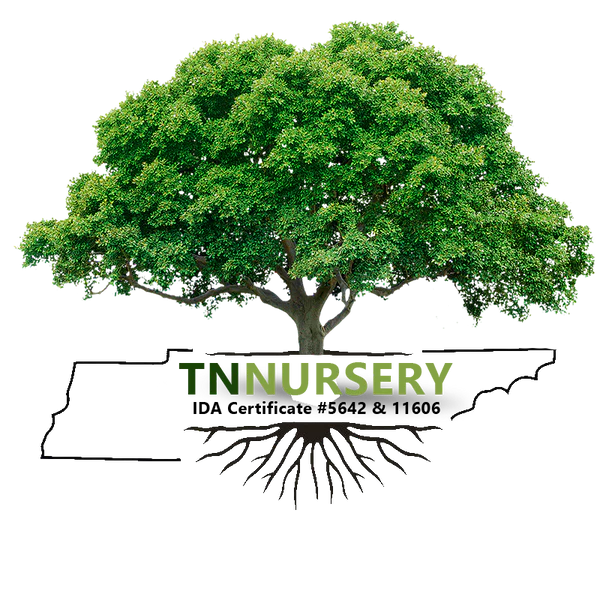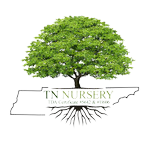


Your Planting Zone is:
-
- Can Not Ship To:
- CA
-
- Exposure
- Sun or Shade
-
- Height At Maturity
- Under 6 Inches
-
- Planting Zones
- 3-9
-
- Shipped As
- Bare-root
-
- Ships
- Now
-
- Usage
- Shade Gardens
Peat Moss - 25 Square Feet

This product has no reviews yet.
Description
Peat Moss is an organic, fibrous material harvested from bogs where it and other organic materials have decomposed anaerobically. Because it breaks down without oxygen, decomposition occurs as a natural process over an extended period.
Peat Moss Is A Great Soil For Plants
It is typically used as an amendment to soil or as a seed starter. Because of its unique properties, it is also famous for hydroponic gardening. This valuable material is an ideal soil conditioner because it loosens compact soils, improving aeration. Additional benefits include increasing the soil's water and nutrient-maintaining capacity, serving as a source of trace minerals, and providing acidity to the soil much needed by plants such as berries, basil, gourds, arugula, and more. It is sterile and free of pathogens and harmful chemicals or non-organic materials.
Peat Moss Has Many Uses
Due to its lightweight and water-retaining properties, it is excellent for hanging plants, raised beds, or terrace gardening. It is widely available and inexpensive in most home improvement stores, gardening centers, and large retail supercenters.
Additionally, it has had hundreds of years of non-gardening uses. The material has been used to make diapers, electricity, and livestock bedding. In recent years, the byproduct created in its production has been used as packaging material.
Peat Moss Cleans And Purifies Water
It is a dark brown, fibrous material comprised of decayed decomposed sphagnum and other living materials. To avoid confusing sphagnum, it is mainly used in potting soil or as a soil amendment. It can manage water well and absorb nutrients that otherwise dissolve from the ground. It can strengthen and improve the soil that it's mixed with. It is highly absorbent and is excellent as a seed starter.
However, more is needed as a potting medium. It became accessible to farmers around the mid-1900s. Found in peat bogs, it takes many millennia for it to form. Annually, peat bogs grow no more than a millimeter in depth, equivalent to about an inch over 15 to 25 years. It is not considered a renewable resource because of the thousands of years it takes for the bogs to mature. It is not regarded as sustainable because of how long it takes to produce, and much controversy surrounds it.
Some consider over-harvesting harmful to the environment due to the carbon released into the atmosphere when gathered. Decomposition is slow with it because it happens without air being present. You can find it in wetlands and peat bogs worldwide. It is a sterile planting medium because it does not contain harmful weed seeds or dangerous pathogens. It has an acidic pH, ideal for plants like blueberries, which love acidic amendments. It is not compact like most organic materials. It is springy when saturated and will rehydrate with ease. It will last for many years.
Peat Moss is Mainly Used as a Potting Soil Ingredient
Many layers of dead and living plants trap water and form peat moss bogs. The top layer is a luxurious, organic compound that is excellent for home gardens. This topcoat is cut into long rolls, dried, and either cut down again into bales or broken down and bagged. When mixed with sandy soil, it helps retain moisture for extended periods. It is more acidic than other compost types, making it great for plants such as blueberries, roses, and hibiscus. It can be used anywhere and is handy as a seed starter because it naturally retains many nutrients for healthy seedlings.
It also encourages robust root growth, making it an excellent choice to add to the soil of container plants. It is also helpful in growing rare orchids, mushrooms, and carnivorous plants. It has been historically used to dress wounds during wartime and help insulate houses in northern regions of the world.
It has more than 350 species, meaning it may vary from tan to dark brown to almost black. Like any other compost, it may be crumblier or crumblier depending on how long it has been allowed to age. The bagged type tends to "fluff" more readily than the baled type. Some gardeners feel that the best is the "finely milled" and baled type, while the least expensive and more useful potting soil filler is usually labeled simply as "sphagnum peat moss."
Reviews
Shipping and Warranty
Shipping Information
We dig fresh our plants and ship immediately. We ship US Mail, Priority shipping. You will receive a tracking number once your plants ship. All plants will be fine in their packages for up to 3 days after receiving.
How We Protect Your Plants For Transit
We sell only bare root plants. We dip the roots in tera-sorb silicone gel to retain ample moisture for transit and surround with plastic. This is superior protection for plants in transit for up to 12 days.
Upon Receipt Of Your Plants
Open your plants and inspect the same day received. We offer 3 days to report any problems with your order. Bare root plants need to be planted within 2-3 days of receiving unless weather-related problems prohibit planting. Store in a cool place and keep roots moist and covered with plastic until they can be planted. Water for the first week daily after planting.
See our warranty page for further info.
Gardening Tips
Videos
Peat Moss is an organic, fibrous material harvested from bogs where it and other organic materials have decomposed anaerobically. Because it breaks down without oxygen, decomposition occurs as a natural process over an extended period.
Peat Moss Is A Great Soil For Plants
It is typically used as an amendment to soil or as a seed starter. Because of its unique properties, it is also famous for hydroponic gardening. This valuable material is an ideal soil conditioner because it loosens compact soils, improving aeration. Additional benefits include increasing the soil's water and nutrient-maintaining capacity, serving as a source of trace minerals, and providing acidity to the soil much needed by plants such as berries, basil, gourds, arugula, and more. It is sterile and free of pathogens and harmful chemicals or non-organic materials.
Peat Moss Has Many Uses
Due to its lightweight and water-retaining properties, it is excellent for hanging plants, raised beds, or terrace gardening. It is widely available and inexpensive in most home improvement stores, gardening centers, and large retail supercenters.
Additionally, it has had hundreds of years of non-gardening uses. The material has been used to make diapers, electricity, and livestock bedding. In recent years, the byproduct created in its production has been used as packaging material.
Peat Moss Cleans And Purifies Water
It is a dark brown, fibrous material comprised of decayed decomposed sphagnum and other living materials. To avoid confusing sphagnum, it is mainly used in potting soil or as a soil amendment. It can manage water well and absorb nutrients that otherwise dissolve from the ground. It can strengthen and improve the soil that it's mixed with. It is highly absorbent and is excellent as a seed starter.
However, more is needed as a potting medium. It became accessible to farmers around the mid-1900s. Found in peat bogs, it takes many millennia for it to form. Annually, peat bogs grow no more than a millimeter in depth, equivalent to about an inch over 15 to 25 years. It is not considered a renewable resource because of the thousands of years it takes for the bogs to mature. It is not regarded as sustainable because of how long it takes to produce, and much controversy surrounds it.
Some consider over-harvesting harmful to the environment due to the carbon released into the atmosphere when gathered. Decomposition is slow with it because it happens without air being present. You can find it in wetlands and peat bogs worldwide. It is a sterile planting medium because it does not contain harmful weed seeds or dangerous pathogens. It has an acidic pH, ideal for plants like blueberries, which love acidic amendments. It is not compact like most organic materials. It is springy when saturated and will rehydrate with ease. It will last for many years.
Peat Moss is Mainly Used as a Potting Soil Ingredient
Many layers of dead and living plants trap water and form peat moss bogs. The top layer is a luxurious, organic compound that is excellent for home gardens. This topcoat is cut into long rolls, dried, and either cut down again into bales or broken down and bagged. When mixed with sandy soil, it helps retain moisture for extended periods. It is more acidic than other compost types, making it great for plants such as blueberries, roses, and hibiscus. It can be used anywhere and is handy as a seed starter because it naturally retains many nutrients for healthy seedlings.
It also encourages robust root growth, making it an excellent choice to add to the soil of container plants. It is also helpful in growing rare orchids, mushrooms, and carnivorous plants. It has been historically used to dress wounds during wartime and help insulate houses in northern regions of the world.
It has more than 350 species, meaning it may vary from tan to dark brown to almost black. Like any other compost, it may be crumblier or crumblier depending on how long it has been allowed to age. The bagged type tends to "fluff" more readily than the baled type. Some gardeners feel that the best is the "finely milled" and baled type, while the least expensive and more useful potting soil filler is usually labeled simply as "sphagnum peat moss."
Shipping Information
We dig fresh our plants and ship immediately. We ship US Mail, Priority shipping. You will receive a tracking number once your plants ship. All plants will be fine in their packages for up to 3 days after receiving.
How We Protect Your Plants For Transit
We sell only bare root plants. We dip the roots in tera-sorb silicone gel to retain ample moisture for transit and surround with plastic. This is superior protection for plants in transit for up to 12 days.
Upon Receipt Of Your Plants
Open your plants and inspect the same day received. We offer 3 days to report any problems with your order. Bare root plants need to be planted within 2-3 days of receiving unless weather-related problems prohibit planting. Store in a cool place and keep roots moist and covered with plastic until they can be planted. Water for the first week daily after planting.
See our warranty page for further info.

